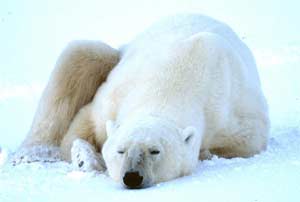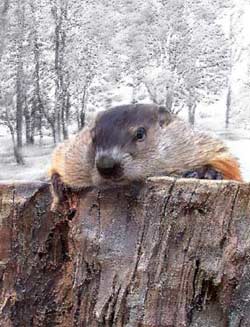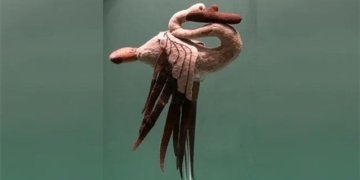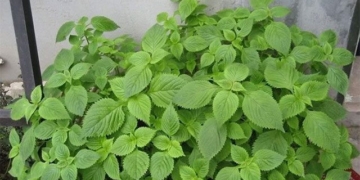 |
Mother bears typically give birth during hibernation |
Hibernation is an instinct of certain animal species to survive the harsh winter cold. They can hibernate for months without eating, drinking, or moving, yet they do not die. Surprisingly, mother bears often give birth while in hibernation.
For centuries, scientists have studied the phenomenon of animal hibernation. They believe that animals have a thick layer of white fat beneath their skin, which helps insulate against heat loss. Around the shoulder and chest bones of hibernating animals, there is also a layer of brown fat that acts like a thermal blanket, producing heat 20 times faster than white fat. Furthermore, the colder it gets, the more heat is generated.
When the environmental temperature drops, the sensory cells of hibernating animals send signals to the brain, stimulating the sympathetic nervous system of the brown fat, causing it to generate enough heat to ensure the hibernating animal does not freeze to death.
 |
| The serum from the marmot induces hibernation in golden hamsters most effectively (Image: punxsutawney) |
Researchers have explored animal physiology but have not yet determined what drives animals to hibernate. For instance, black bears spend up to 20 hours a day eating in the month leading up to hibernation, accumulating daily caloric intake from 7,000 to 20,000 calories, and gaining nearly 50 kg in weight. This implies that there are certain substances in the animal’s body that naturally induce them into a hibernation state.
To validate this theory, scientists conducted experiments on golden hamsters. They injected blood from hibernating hamsters into the veins of active hamsters, then placed the active hamsters in an environment with a low temperature of 7 degrees Celsius. A few days later, all the hamsters entered hibernation, demonstrating that there is a natural hibernation-inducing substance.
Furthermore, they separated serum and red blood cells from the blood of hibernating animals and injected them into two groups of golden hamsters. Shortly after, both groups entered hibernation. They then filtered the serum to isolate the smaller molecules and the remaining substances, injecting each separately into the golden hamsters, finding that only the filtered substance induced hibernation. This suggests that the hibernation-inducing substance has very small molecular size. Notably, the serum from the marmot was the most effective at inducing hibernation in golden hamsters, regardless of whether it was winter or summer.
In conclusion, scientists determined that the formation of hibernation is influenced not only by the sleep-inducing substances but also by the interaction between these substances and wakefulness-inhibiting substances. Animals produce sleep-inducing substances year-round, but wakefulness-inhibiting substances are only produced in spring and autumn. A sufficient amount of sleep-inducing substances will catalyze hibernation, whereas in spring, the production of wakefulness-inhibiting substances will inhibit sleep induction, awakening the animals.




















































